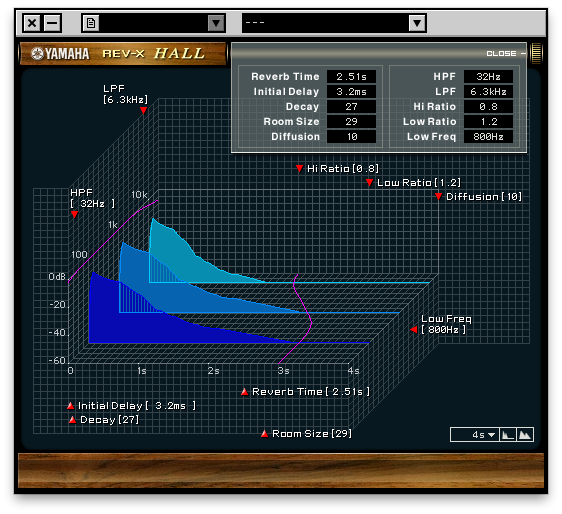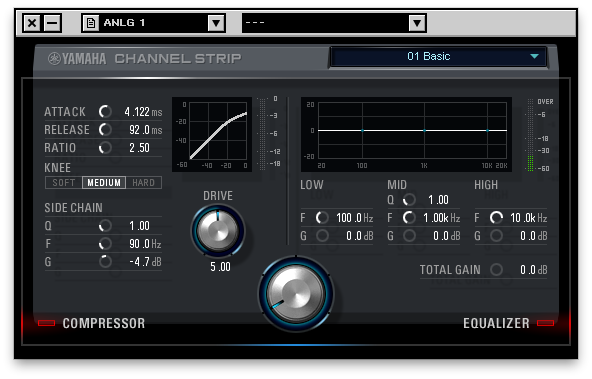Zero latency monitoring and the effects
The UR824 is equipped with a monitoring system with zero latency, that is, without any delay that could cause an annoying echo between the singing voice (or the playing instrument) and the signal sent to the headphones or the monitors. You can apply dedicated compression and equalization on eight of the audio inputs - this is essential for giving the talent the same feeling you would expect from a finished mix. Processing can either only go to the outputs, or be also recorded.A reverb can be applied to all the audio inputs (including the return from the sequencer, through the out channels #9-10). You can, however, only send it to a single pair of audio outputs. So, if it goes to the singer’s headphones, it can’t go to the guitarist’s.

Programming the reverb, available as a master effect on all channels, is easy thanks to a 3D graphical display.
The quality is that of the effects of any Yamaha mixers of that age: definitely good, even if a bit cold and impersonal. Since - unlike with the MR816csx sibling - you can’t apply compression and equalization from the internal DSPs to any audio file already recorded, Steinberg provides, as a compensation, the same effects in the form of VST3 plugins, to be used in Cubase or other audio applications running on Windows. Starting with the software update released at the beginning of 2019, the plugins also exist in AU format, to be used, for example, in Logic or GarageBand, or any other audio application running on the Mac.

The Channel Strip’s insert effects combining compression and equalization in a single effect, called Sweet Spot Morphing Channel Strip.
As a testament to the excellent quality of modern drivers, very low latency can be achieved without the sound starting to stutter. For the first test released in 2011, we played the whole final section of the Pictures from an exhibition by Modest Mussorgsky with a piano running on NI Kontakt 4. This was on a dated Mac, with a buffer of 64 samples, without the sound being interrupted. At 32 samples we lost two notes the first time they were played. At 256 samples everything was going smoothly. Even with the smallest memory buffer, NI Guitar Rig has continued to face our inexorable electric guitar riffs with aplomb.
During the following years, the driver was constantly updated, and has proven reliable. Any bug reported by the user was fixed in subsequent versions. The current version is compatible with the current Mac and Windows OS versions.
For the record, however, it must be pointed out that the UR isn’t among the audio interfaces of its generation that can manage the highest number of instances of virtual instruments and effects (the MR was able to do much better, positioning itself among the best of its age). It is also true that certain ‘endurance tests’ reveal limits that are rarely achievable in normal studio or live situations - and that in fact didn’t occur while writing this article.
intro | overview | software | effects | quality | conclusion